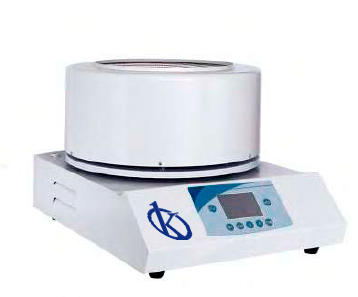A heating blanket is a device used to maintain a hot, even surface of a material. This is done by placing an electric heating element on the bottom of an insulating material cover. These covers can be made of plastic, copper or even insulating minerals. This form of heating is used in many laboratories to perform numerous chemical, physical or biological processes.
In most cases, heating cloths are used to increase the temperature in specific areas. This is especially useful when it comes to experiments that require precise temperature control. A good example of this would be a chemical reaction in a mixture, which requires a very precise temperature range to get the best results. The uniform temperature that the heating cloths can provide helps achieve the desired results.
What other uses do heating blankets have in the laboratory?
Another common use of heating cloths is for melting and welding materials in metalworking laboratories. This is especially useful for welding materials that are too fragile to be heated with a conventional lighter. Some of these materials can be iron, steel or aluminum, among others. Heating cloths can be used to provide the heat needed to melt these materials without affecting their structure.
In addition, heating cloths can also be used to heat vessels, such as test tubes or flasks, at high temperatures and with precise control. This is especially useful for experiments involving chemical reactions at extremely high temperatures. Heating cloths allow to homogenize and control the temperature of the containers necessary for the reaction, which significantly reduces the risk of errors in the process.
Uses of the heating blanket for the separation of mixtures
Some homogeneous mixtures can be separated by heating. An example of this is a mixture of two alcohols, an alcohol in water, or water with acetone. In that sense, the mixture of both solvents is put inside a round-bottomed flask, and this in turn inside the heating blanket. The distillation assembly is done and the solvents will be separated according to their boiling point. In this case, the heating blanket allows a controlled and homogeneous heating so that separation is possible.
Finally, heating cloths can also be used to dissolve materials. This is a common technique for separating the chemical components of a solution. Heating cloths allow a rapid increase in the temperature of a solution, which accelerates dissolution. This can be especially useful when you want to increase the speed of chemical reactions, or when you want to obtain crystalline two-component materials.
Why are heating blankets useful in laboratories?
In the laboratories there are certain procedures that warrant heating, which is better done with a heating blanket, than by using a conventional lighter. This consideration is taken when one of the components involved can ignite in the presence of a flame, or can be degraded by high temperatures.
In conclusion, heating cloths are widely used in laboratories due to their high versatility and flexibility. These devices can produce high and controlled temperatures to carry out many chemical and physical reactions, as well as for the welding of fragile material and the dissolution of chemical components. The maintenance and proper use of a heating blanket can ensure the success of any experiment.
Kalstein and solutions in heating blankets for laboratory
Kalstein is a manufacturer of high-tech laboratory equipment and the heating plate is an example of this. With these devices, chemical reactions, separations or any other procedure that warrants heating can be carried out. These equipments are characterized by precise temperature control that can reach up to 350 degrees; the volume they can heat can reach up to ten liters and the housing is anti-corrosion. These devices are available for sale on the following pages HERE and HERE . On these pages, you can also consult the purchase options, and know the prices of this and other laboratory equipment.

